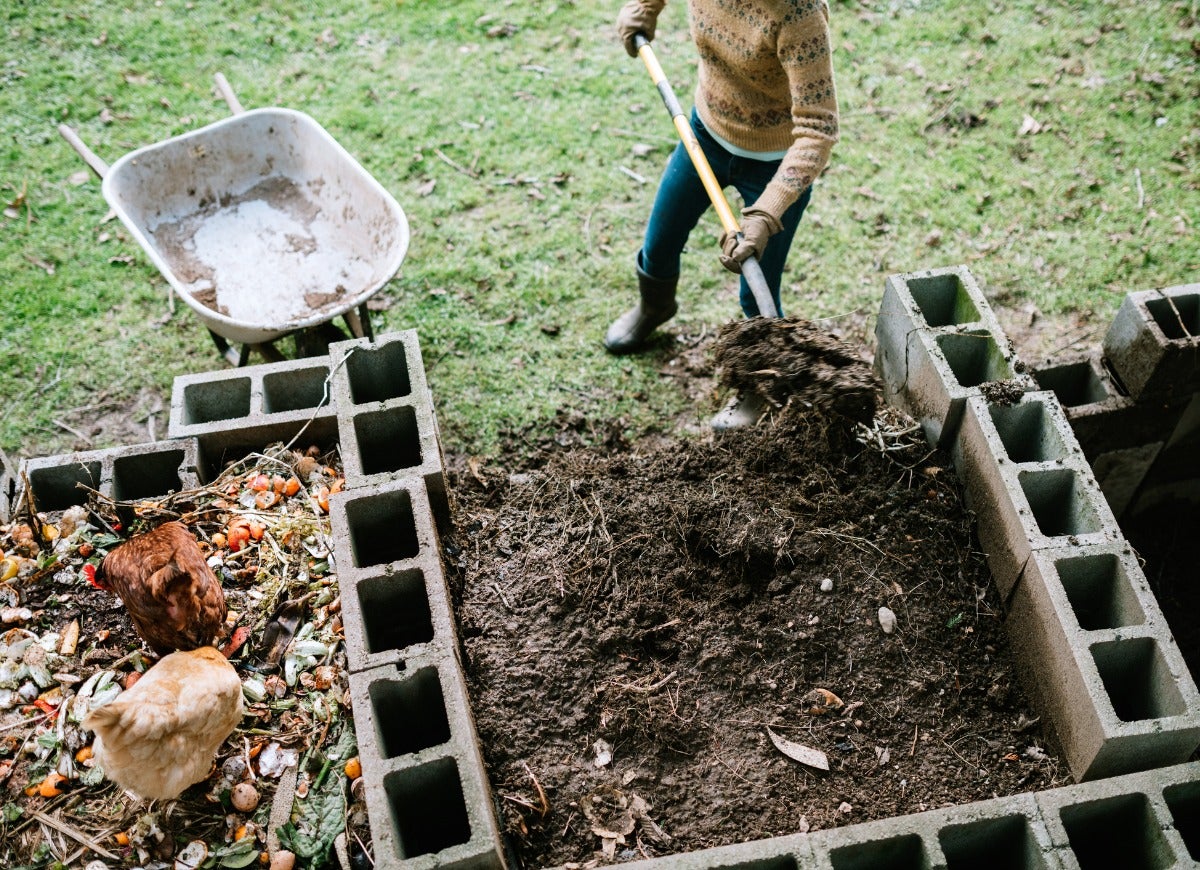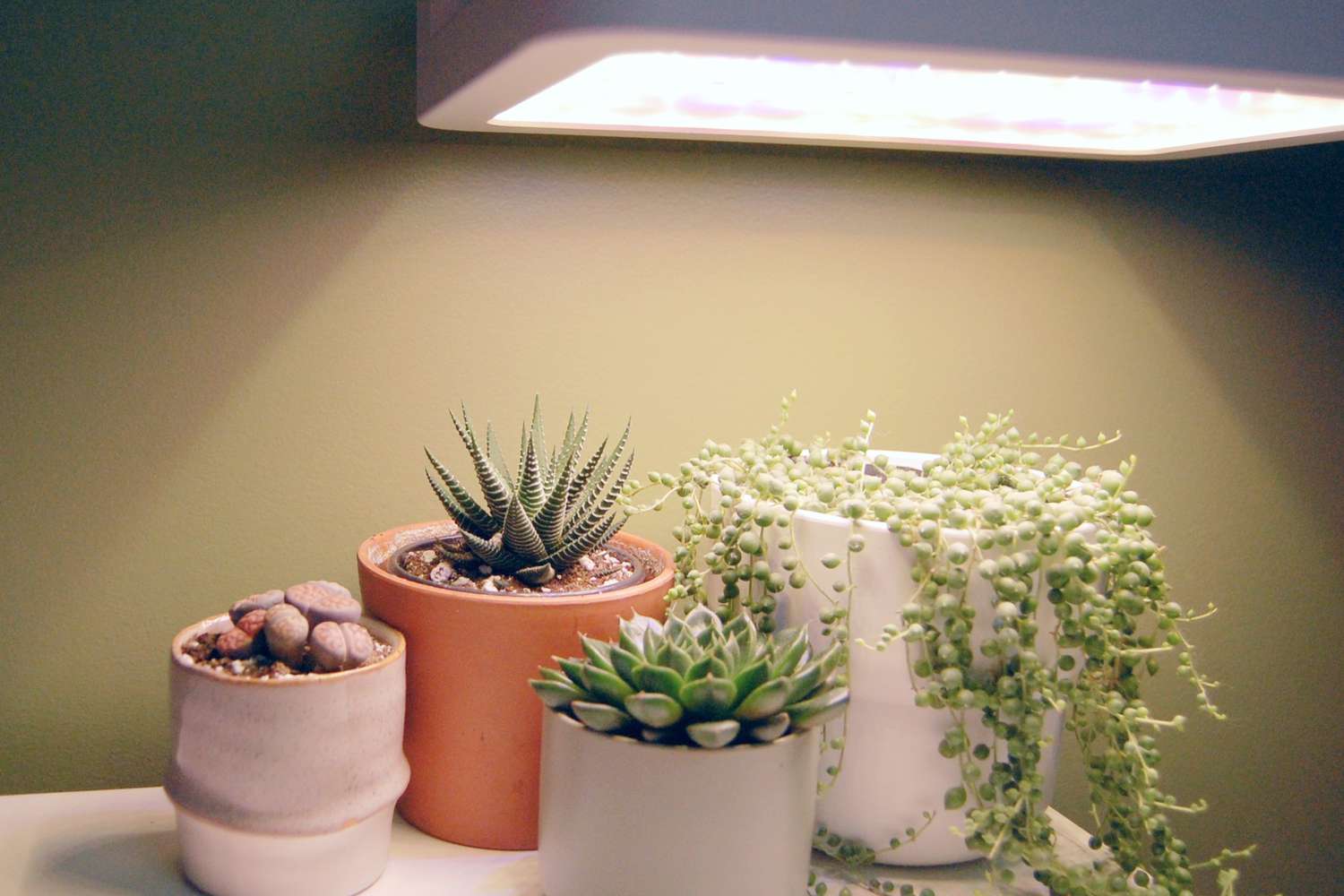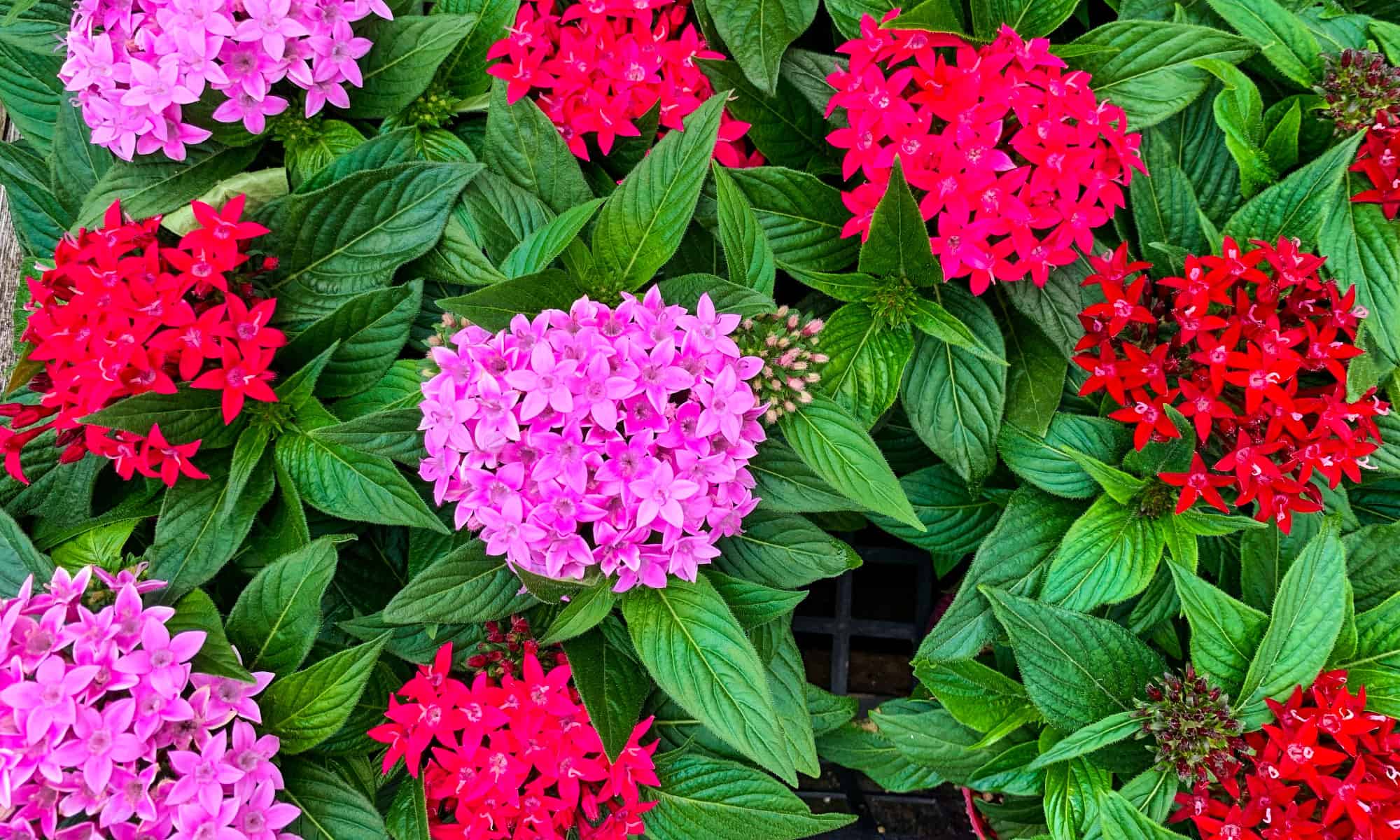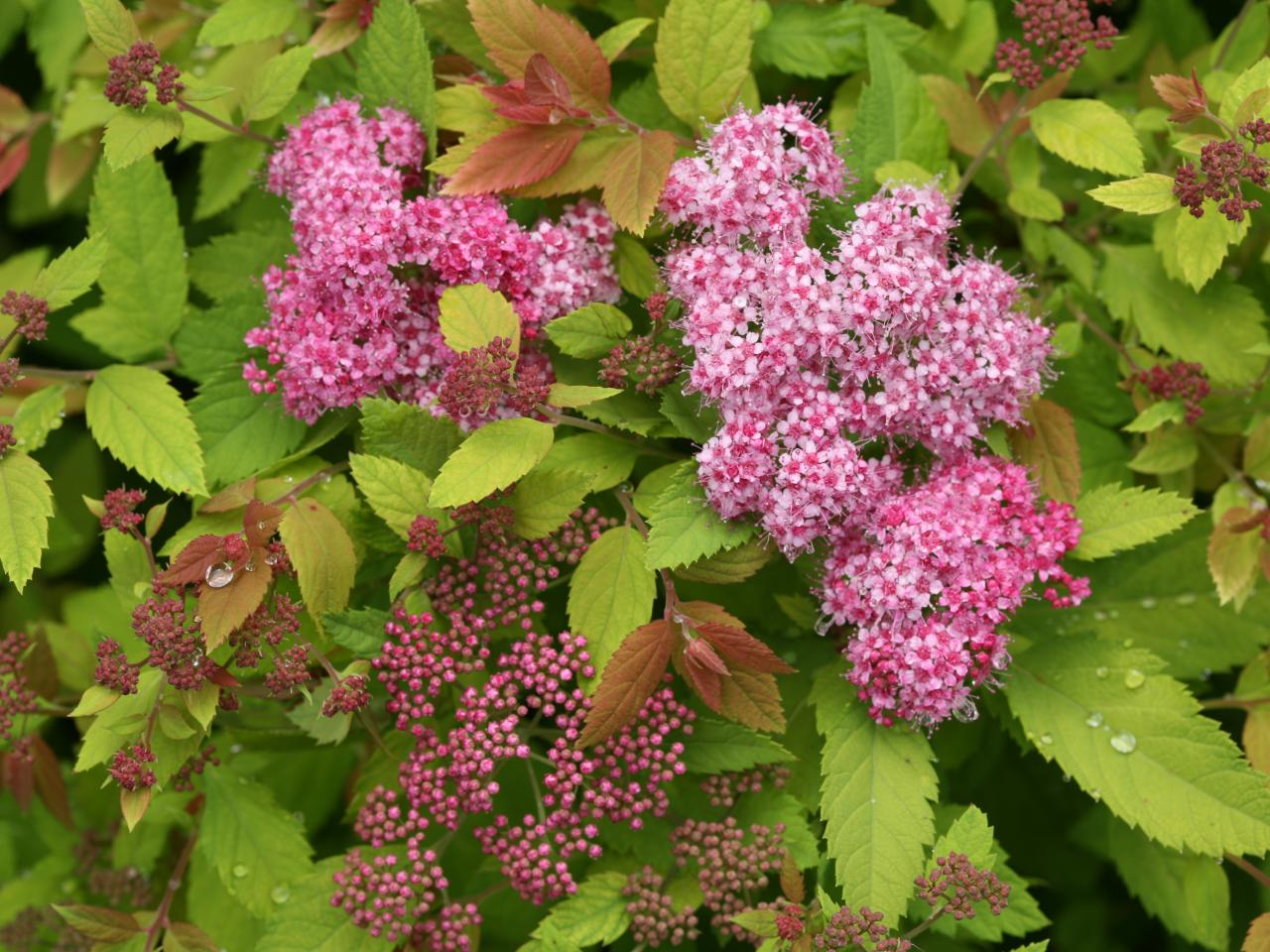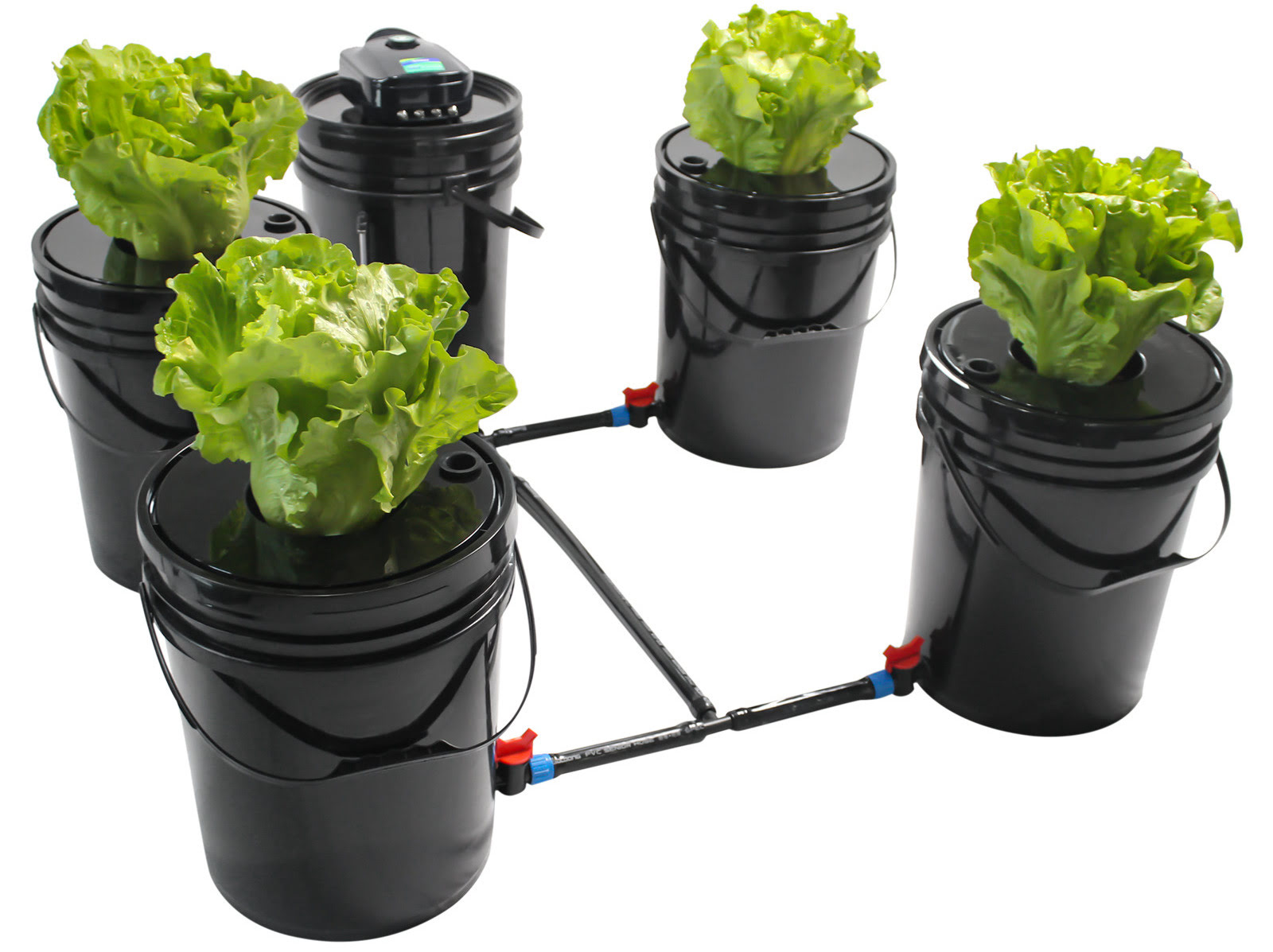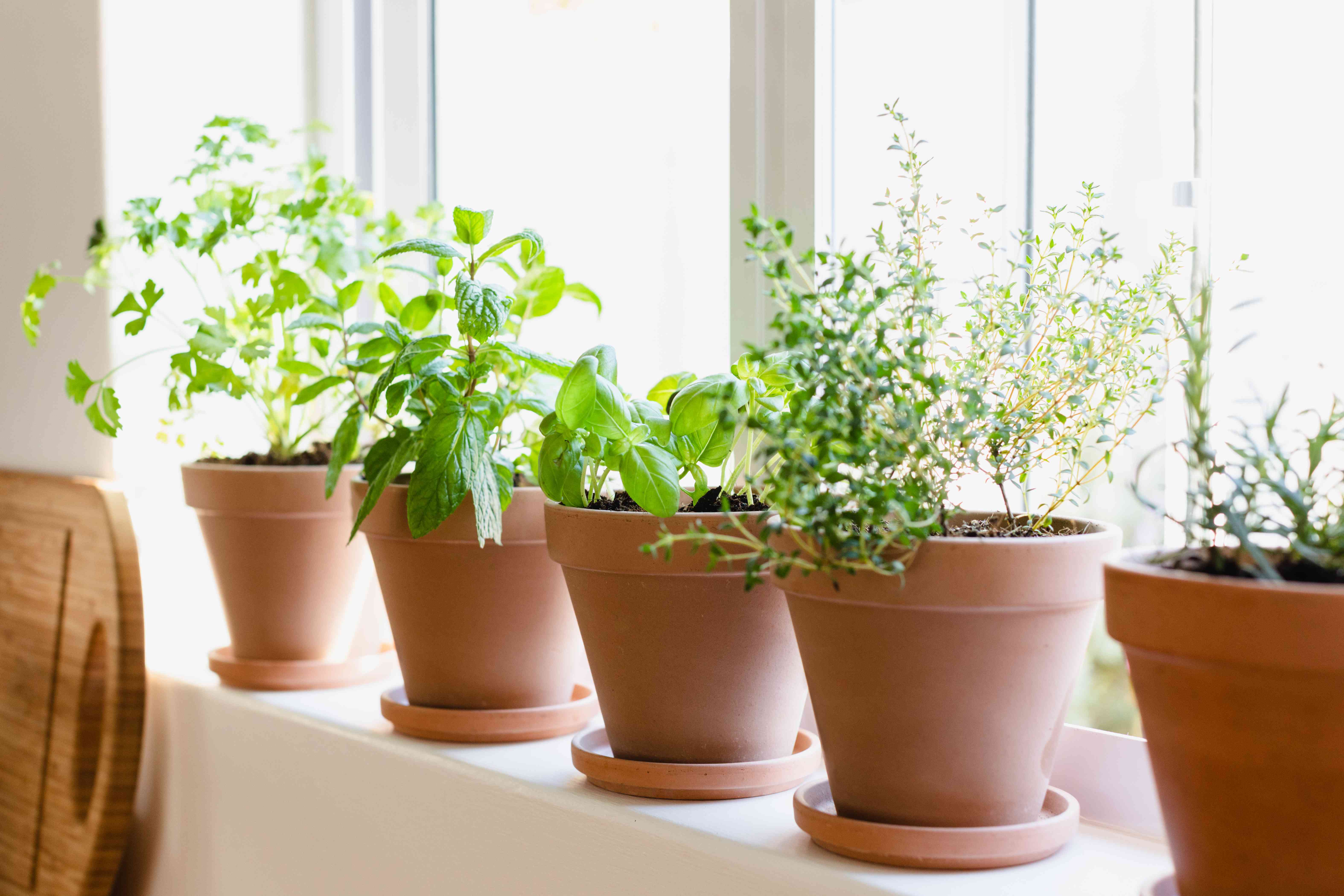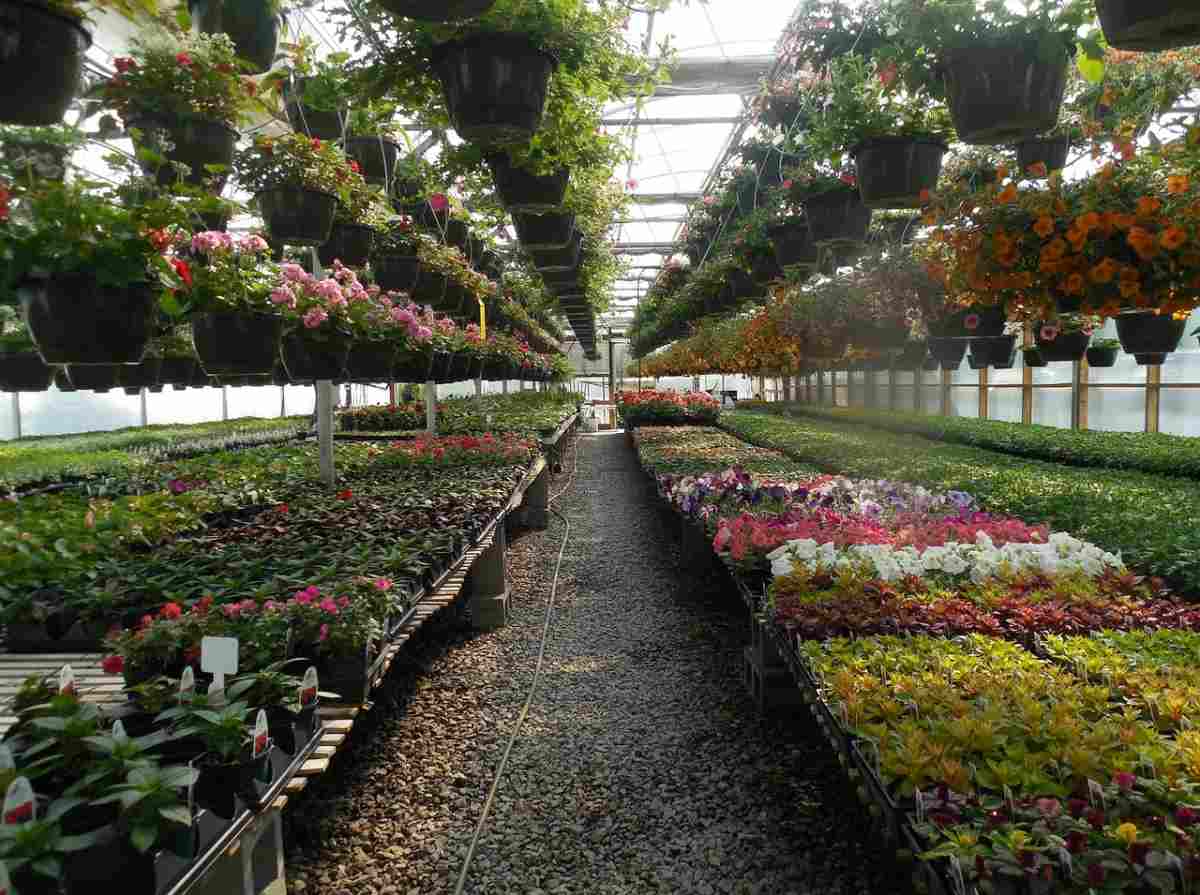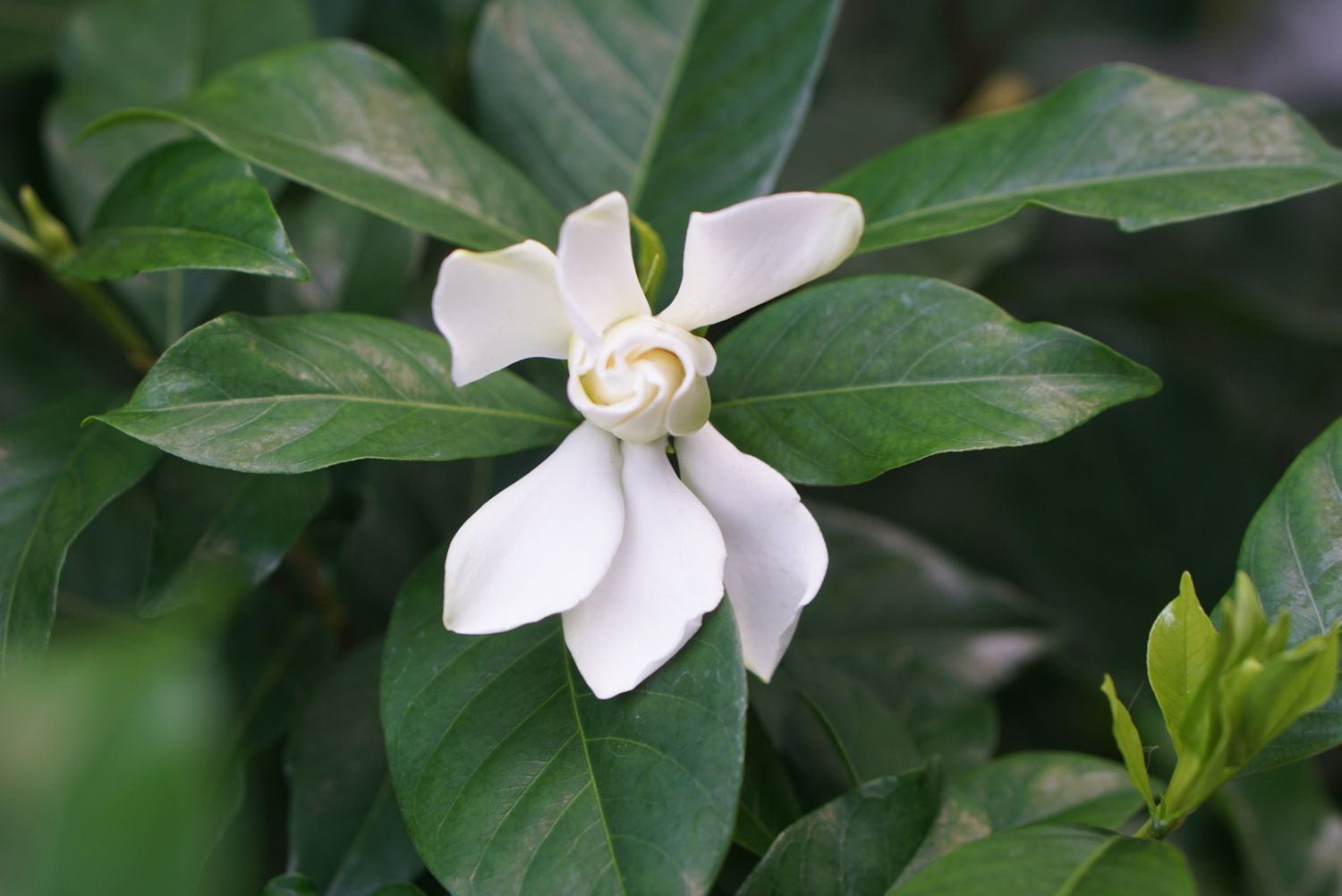Home>Gardening Basics>Understanding Soil>What Shrubs Grow Best In Zone 8A


Understanding Soil
What Shrubs Grow Best In Zone 8A
Modified: January 22, 2024
Discover the best shrubs that thrive in Zone 8A with our guide to understanding soil. Create a stunning garden with plants that are perfectly suited to your local climate!
(Many of the links in this article redirect to a specific reviewed product. Your purchase of these products through affiliate links helps to generate commission for Chicagolandgardening.com, at no extra cost. Learn more)
Table of Contents
Introduction
Welcome to our guide on understanding shrub growth in Zone 8A! This article will help you explore the best shrubs that thrive in this specific USDA hardiness zone. Whether you are a gardening enthusiast or a beginner looking to enhance the beauty of your landscape, understanding the unique characteristics of Zone 8A and selecting the right shrubs will be instrumental in creating a flourishing garden.
Zone 8A is characterized by its mild winter temperatures and long, hot summers. It covers various regions across the United States, including portions of the Pacific Northwest, Gulf Coast, and southern states. With an average minimum temperature range of 10°F to 15°F (-12°C to -9°C), Zone 8A creates a favorable environment for a wide range of plant species.
When selecting shrubs for Zone 8A, it is crucial to consider several factors to ensure successful growth. Factors such as sunlight exposure, soil type, drainage, and moisture levels play a significant role in determining the suitability of shrubs for your specific garden conditions. By understanding these considerations and making informed decisions, you can create a thriving garden that complements the natural environment of Zone 8A.
In the following sections, we will discuss the best shrubs that grow well in Zone 8A. From vibrant azaleas to elegant camellias, these shrubs offer a range of colors, textures, and foliage types to enhance your garden’s beauty. Whether you are looking for shrubs for foundation plantings, borders, or focal points, there is a diverse selection of options to choose from.
So, without further ado, let’s dive into the world of shrubs that will thrive in Zone 8A and transform your garden into a stunning oasis!
Understanding Zone 8A
Zone 8A is a plant hardiness zone designated by the United States Department of Agriculture (USDA). It is characterized by its specific climate conditions, particularly the average minimum winter temperature range of 10°F to 15°F (-12°C to -9°C). This zone is known for its mild winters and long, hot summers, making it ideal for a wide variety of plant species, including shrubs.
Zone 8A covers various regions across the United States, including parts of the Pacific Northwest, Gulf Coast, and southern states. Some states that fall within this zone include Alabama, Mississippi, Louisiana, Texas, Georgia, and parts of Florida, California, and Oregon. While these regions may have different soil types and microclimates, the overall climate of Zone 8A remains relatively consistent.
One of the key advantages of gardening in Zone 8A is the extended growing season. With mild winters, gardeners can enjoy a longer growing period and have the opportunity to cultivate a wide range of plants, including many shrub varieties.
However, it is essential to note that while Zone 8A offers favorable conditions for plant growth, it also presents certain challenges. The hot summers can be stressful for some plants, and adequate water supply and proper irrigation become critical factors in maintaining the health and vitality of shrubs in this zone.
Another factor to consider in Zone 8A is the potential for extreme weather events. This region is susceptible to hurricanes, high winds, and heavy rains, depending on its specific location. Gardeners should select shrubs that can withstand these weather conditions and secure them properly to ensure their survival.
Understanding the specific characteristics of Zone 8A will help you make informed decisions when selecting shrubs for your garden. It is important to consider the unique climate, soil conditions, and potential weather challenges of this zone to create a beautiful and resilient landscape.
Factors to Consider
When choosing shrubs for Zone 8A, there are several important factors to consider to ensure successful growth and overall landscape health. By taking these factors into account, you can make informed decisions and create a beautiful and thriving garden.
1. Sunlight Exposure: Assess the amount of sunlight your garden receives throughout the day. Some shrubs thrive in full sun, while others prefer partial or dappled shade. Understanding the sunlight requirements of your chosen shrubs is essential for their healthy growth.
2. Soil Type: Zone 8A encompasses different regions with varying soil types. Conduct a soil test to determine the composition and pH level of your soil. Most shrubs prefer well-draining soil that is rich in organic matter.
3. Moisture Levels: Consider the moisture levels in your garden. Some shrubs require consistent moisture, while others are more drought-tolerant. Understanding the moisture requirements of your chosen shrubs will help you determine watering needs and ensure proper care.
4. Native Species: Consider incorporating native shrub species into your garden. Native plants are better adapted to the local climate, require less maintenance, and offer numerous benefits to local wildlife.
5. Growth Habit: Determine the desired growth habit of your shrubs. Some shrubs have a compact, upright form, while others have a spreading or cascading growth habit. Select shrubs that will complement the overall design and layout of your garden.
6. Maintenance Requirements: Evaluate the level of maintenance you are willing to undertake for your shrubs. Some shrubs require regular pruning, fertilizing, and pest control, while others are low-maintenance. Choose shrubs that align with your preferred level of garden upkeep.
7. Wildlife Attraction: Consider the potential wildlife attraction of your selected shrubs. Some shrubs produce berries or nectar that attract birds, butterflies, and pollinators, enhancing the ecological diversity of your garden.
8. Size and Space: Determine the available space in your garden and the size of the shrubs at maturity. This will help you avoid overcrowding and ensure proper spacing for healthy growth and aesthetic appeal.
By considering these factors, you can select shrubs that are well-suited to the unique conditions of Zone 8A and create a stunning and sustainable garden that will thrive for years to come.
Best Shrubs for Zone 8A
The Zone 8A climate offers a wide range of options when it comes to selecting shrubs for your garden. Here are ten of the best shrubs that thrive in Zone 8A:
- Azaleas: Known for their vibrant flowers, azaleas add a splash of color to any landscape. Choose from an array of colors and sizes to create stunning borders or focal points in your garden.
- Camellias: With their elegant blooms, camellias are a popular choice for Zone 8A. These evergreen shrubs provide beautiful flowers during the winter and early spring, adding a touch of sophistication to the garden.
- Rhododendrons: Rhododendrons are known for their large, showy flowers and dense foliage. These shrubs thrive in partially shaded areas and offer stunning blooms in various colors.
- Hydrangeas: Hydrangeas are beloved for their voluminous clusters of flowers. They come in various types, including mophead, lacecap, and panicle, each offering unique beauty and charm to your garden.
- Nandinas: Nandinas, also known as heavenly bamboos, are versatile shrubs that provide year-round interest. They offer colorful foliage, small flowers, and bright berries, adding texture and depth to your garden.
- Holly Shrubs: Holly shrubs are evergreen plants that bring timeless beauty to any garden. With their glossy leaves and vibrant berries, they add a touch of festivity and interest throughout the year.
- Loropetalum: Loropetalum, also known as Chinese fringe flower, offers stunning foliage and vibrant pink flowers. They thrive in full sun to partial shade, making them a versatile choice for Zone 8A gardens.
- Indian Hawthorn: Indian Hawthorn is a tough and reliable shrub that produces clusters of white or pink flowers. It is drought-tolerant and thrives in a variety of soil types, making it a low-maintenance option for your garden.
- Abelia: Abelia shrubs are known for their delicate flowers and glossy leaves. They offer a long flowering season and attract pollinators, making them a beneficial addition to any Zone 8A garden.
- Japanese Pieris: Japanese Pieris is an evergreen shrub with striking foliage that emerges in vibrant shades of red and bronze. It produces cascades of bell-shaped flowers in early spring, adding a magical touch to your garden.
These shrubs are just a glimpse of the many options available for creating a stunning garden in Zone 8A. Each brings its unique beauty, colors, and textures, allowing you to design a landscape that suits your personal style and preferences.
Azaleas
Azaleas are a popular choice for gardens in Zone 8A, thanks to their stunning and vibrant flowers. These flowering shrubs are known for their ability to add a splash of color to any landscape and create eye-catching focal points or borders.
One of the most attractive features of azaleas is their wide range of colors. From shades of pink, red, purple, and white, to bi-color and striped varieties, there is an azalea to suit every gardener’s taste and preference. The flowers often bloom in clusters, creating a beautiful and dramatic display.
Azaleas are typically deciduous, although there are evergreen varieties as well. The deciduous azaleas offer the added bonus of vibrant autumn foliage before their leaves drop in the winter. Evergreen azaleas, on the other hand, provide year-round foliage, adding structure and interest to the garden even when not in bloom.
To ensure the successful growth of azaleas in Zone 8A, it is crucial to provide them with the right conditions. They prefer partial shade to filtered sunlight, as full sun exposure can scorch their delicate flowers and foliage. Additionally, azaleas thrive in well-drained soil that is rich in organic matter. Acidic soil with a pH range of 4.5 to 6.0 is ideal for these shrubs.
Proper care and maintenance are also essential for the health and longevity of azaleas. Regular watering, especially during dry spells, is necessary, as these shrubs have shallow root systems and can become stressed without adequate moisture. Mulching around the base of the plant helps retain moisture and prevent weed growth. Pruning should be done after flowering to shape the shrub and promote new growth.
Azaleas are not only visually appealing but also attract pollinators to the garden. Bees, butterflies, and other beneficial insects are drawn to the nectar-rich flowers, enhancing the overall biodiversity of your garden.
Whether you choose to plant azaleas as standalone specimens or incorporate them into mixed borders or foundation plantings, their vibrant colors and charming blooms are sure to enhance the beauty of your garden in Zone 8A.
Camellias
Camellias are elegant and enchanting shrubs that are well-suited for Zone 8A gardens. Known for their exquisite flowers and glossy evergreen foliage, camellias are a favorite among gardeners looking to add beauty and sophistication to their landscapes.
One of the standout features of camellias is their striking blooms. Depending on the variety, camellias can produce flowers in a wide range of colors, including shades of pink, red, white, and even variegated combinations. These flowers, often resembling roses or peonies, add a touch of luxury and romance to any garden space.
Camellias are known for their ability to bloom during the winter and early spring, providing a burst of color when most other plants are dormant. This makes them particularly valuable for creating interest and beauty during the colder months of the year.
When it comes to growing camellias in Zone 8A, a few key considerations are essential. First and foremost, camellias prefer partial shade to filtered sunlight. They thrive in locations that receive morning sun and afternoon shade, protecting their delicate flowers from scorching. Planting them under the canopy of larger trees or providing light shade during the hottest parts of the day can help create optimal growing conditions.
In terms of soil, camellias prefer well-drained, slightly acidic soil that is rich in organic matter. Amending the soil with organic compost before planting can help improve its texture and fertility. Additionally, mulching around the base of the plant helps maintain soil moisture and suppress weed growth.
Regular watering is crucial for camellias, especially during periods of drought. While they can tolerate some dryness, consistent moisture is essential for healthy growth and flower production. Avoid overwatering, as camellias are susceptible to root rot in waterlogged soil.
Camellias are generally low-maintenance shrubs, but periodic pruning can help maintain their shape and vigor. Pruning should be done after flowering, as they set flower buds for the following season soon after. Removing dead or damaged branches, and thinning out overcrowded growth, promotes airflow and reduces the risk of diseases.
With their beautiful blooms and evergreen foliage, camellias are sure to bring a touch of elegance and charm to any Zone 8A garden. Whether planted as specimen shrubs or used in hedges or borders, camellias are a true delight for both experienced and novice gardeners alike.
Rhododendrons
Rhododendrons are beloved shrubs that thrive in Zone 8A gardens, adding beauty and charm with their stunning flowers and dense foliage. These versatile plants come in a wide range of varieties, with colors that span the spectrum from vibrant pinks and purples to soft whites and delicate pastels.
One of the key features that make rhododendrons popular is their large, showy flowers. These blossoms appear in clusters and can vary in shape from trumpet-like to bell-shaped. Rhododendrons often bloom in late spring or early summer, creating a breathtaking display of color and attracting attention from both humans and pollinators alike.
Aside from their dazzling blooms, rhododendrons also offer lush evergreen foliage. The glossy leaves provide a beautiful backdrop even when the shrub is not in bloom. This dense foliage adds texture and structure to the garden, creating a year-round visual appeal.
When it comes to growing rhododendrons in Zone 8A, there are a few essential considerations to keep in mind. These shrubs thrive in partially shaded areas, where they are protected from intense afternoon sun. Morning sunlight and dappled shade provide the optimal light conditions for rhododendrons to thrive and produce abundant blooms.
Soil preparation is crucial for the success of rhododendrons. They prefer well-drained soil that is acidic, typically with a pH range of 4.5 to 6.0. Amending the soil with organic matter, such as peat moss or compost, can help achieve the desired acidity and improve drainage.
Watering is important for rhododendrons, especially during dry spells or when newly planted. They require consistent moisture, but it is crucial to avoid waterlogged conditions, as rhododendrons are susceptible to root rot. Applying a layer of mulch around the base of the shrub can help retain moisture and prevent weed growth.
Pruning is generally minimal for rhododendrons. Deadheading spent flowers and lightly shaping the shrub can help maintain its appearance and encourage new growth. It is best to prune immediately after flowering to avoid cutting off next season’s flower buds.
Rhododendrons are not only visually appealing but also attract pollinators, such as bees and butterflies, to the garden. Their nectar-rich flowers provide a valuable food source for these beneficial insects, contributing to the overall biodiversity of the landscape.
With their vibrant flowers and evergreen foliage, rhododendrons are a wonderful addition to any Zone 8A garden. Whether used as specimen plants, foundation plantings, or in mixed borders, these beautiful shrubs are sure to make a statement and bring joy to any gardener.
Hydrangeas
Hydrangeas are beloved shrubs that are well-suited for Zone 8A gardens, thanks to their voluminous clusters of flowers and lush foliage. These versatile plants offer an array of colors and bloom types, adding beauty and charm to any landscape.
One of the standout features of hydrangeas is their large and showy flowers. These blooms vary in shape and size, ranging from the classic mophead with its dense, rounded clusters to the delicate lacecap, which features flat, lacy blooms. Hydrangeas come in hues of blue, pink, purple, white, and even green, allowing gardeners to create stunning displays of color.
Hydrangeas typically bloom from late spring to summer, and some varieties can even offer blooms into the fall. Aside from their captivating flowers, hydrangeas also offer attractive foliage that is often deep green and lush. The foliage adds visual interest, texture, and structure to the garden, making these shrubs a favorite for many gardeners.
When it comes to growing hydrangeas in Zone 8A, there are a few key considerations to keep in mind. These shrubs generally prefer partial shade, especially during hot summer afternoons when intense sunlight can damage their delicate blooms. Morning sunlight and filtered shade provide the best growing conditions for hydrangeas.
Hydrangeas thrive in well-drained soil that is rich in organic matter. They prefer soil that is moist but not waterlogged. Regular watering is essential, especially during dry spells, to ensure the health and continuous blooming of these shrubs. Mulching around the base of the plant helps retain moisture and regulate soil temperature.
Pruning of hydrangeas depends on the specific variety. Some hydrangeas bloom on old wood, meaning the flower buds develop on stems from the previous season. These varieties should be pruned immediately after flowering to avoid cutting off next year’s blooms. Other hydrangeas bloom on new wood, where the flowers form on the current season’s growth. These can be pruned in late winter or early spring before new growth begins.
Hydrangeas are adored not only for their stunning appearance but also for their ability to attract pollinators, such as bees and butterflies. The abundant nectar and pollen-rich flowers serve as valuable food sources for these beneficial insects, aiding in the overall health and biodiversity of the garden.
With their captivating flowers and lush foliage, hydrangeas are excellent choices for adding color and beauty to Zone 8A gardens. Whether used as focal points, hedges, or mass plantings, these versatile shrubs are sure to bring joy and visual appeal to any landscape.
Nandinas
Nandinas, also known as heavenly bamboos, are versatile shrubs that thrive in Zone 8A gardens, offering year-round interest and adding texture and color to the landscape. These shrubs are loved for their striking foliage, delicate flowers, and vibrant berries, making them an excellent choice for both ornamental and functional purposes.
One of the standout features of nandinas is their foliage. The leaves are typically lacy and divided, resembling bamboo, hence the common name “heavenly bamboo.” The foliage emerges in shades of bright green or vibrant red, adding a pop of color to the garden. In the fall, the leaves often transform into stunning shades of red, orange, and purple, creating a beautiful display of autumn colors.
In addition to their attractive foliage, nandinas produce small, fragrant flowers in the spring or summer. These delicate blossoms add a touch of elegance and can attract pollinators to the garden. After the flowers fade, nandinas develop clusters of bright berries that can last well into the winter months. These berries provide food for birds and add visual interest to the shrub.
Nandinas are relatively low-maintenance shrubs, making them suitable for gardeners of all experience levels. They are adaptable to various soil types but prefer well-drained soil. These shrubs tolerate both sun and partial shade, although they tend to have the best foliage color in locations with more sun exposure.
Regular watering is important for young nandina shrubs to establish a strong root system. Once established, they are moderately drought-tolerant and require less frequent watering. Adding a layer of mulch around the base of the plant helps retain moisture and control weed growth.
Pruning of nandinas is typically minimal and can be done in late winter or early spring before new growth emerges. It is recommended to remove any dead or damaged branches and thin out crowded growth to improve airflow and maintain a neat appearance.
Whether used as border plants, foundation plantings, or mass plantings, nandinas bring a unique and exotic look to Zone 8A gardens. With their striking foliage, delicate flowers, and vibrant berries, these shrubs create a visually appealing and dynamic landscape throughout the year.
Holly Shrubs
Holly shrubs are evergreen plants that bring timeless beauty and a touch of festivity to any Zone 8A garden. With their glossy leaves and vibrant berries, holly shrubs offer year-round interest and add structure and color to the landscape.
One of the most notable features of holly shrubs is their glossy, dark green leaves. These evergreen leaves provide an elegant backdrop and remain vibrant and lush throughout the year, even in winter. Their shiny appearance adds a touch of sophistication to the garden and creates a visually appealing contrast against other plants.
Another characteristic that sets holly shrubs apart is their bright red berries, which form in the fall and persist through winter. The berries not only add splashes of color to the landscape but also provide a valuable food source for birds during the colder months. This makes holly shrubs not only visually appealing but also ecologically beneficial.
Holly shrubs come in a variety of sizes and shapes, from compact to tall and columnar to spreading. This diversity allows gardeners to select the perfect holly cultivar to suit their space and design preferences. Some holly varieties even feature variegated leaves or unique foliage textures, adding additional visual interest to the garden.
When it comes to growing holly shrubs in Zone 8A, they are generally hardy and adaptable. They thrive in well-draining soil and prefer slightly acidic to neutral pH levels. Adequate moisture is important, especially during the establishment period, but once established, holly shrubs are relatively drought-tolerant and can withstand periods of dryness.
Pruning of holly shrubs is typically done in late winter or early spring, before new growth begins. Regular pruning helps maintain the desired shape, remove any dead or damaged branches, and promote new growth. Some holly varieties can also be pruned into formal hedges or topiaries, adding a touch of formality to the landscape.
Whether used as foundation plantings, hedges, or specimen plants, holly shrubs bring a timeless elegance and festive charm to Zone 8A gardens. They provide year-round interest, with their glossy leaves and vibrant berries, and their adaptability makes them a great addition to any landscape design.
Loropetalum
Loropetalum, also known as Chinese fringe flower, is a versatile and eye-catching shrub that thrives in Zone 8A gardens. With its stunning foliage and vibrant flowers, loropetalum adds a touch of elegance and charm to any landscape.
One of the standout features of loropetalum is its foliage. The leaves are typically dark green or burgundy, with a glossy texture that adds visual interest and depth to the garden. Some varieties even have variegated leaves, which offer additional color and texture to the landscape. The foliage remains evergreen in milder climates, providing year-round beauty.
In addition to its attractive foliage, loropetalum produces clusters of delicate and fragrant flowers. These flowers can range in color from white and cream to shades of pink, red, and even purple. The vibrant blooms appear in the spring and can reappear sporadically throughout the year, adding bursts of color to the garden.
Loropetalum is a relatively low-maintenance shrub, making it an excellent choice for both experienced and novice gardeners. It can tolerate a wide range of soil types but prefers well-drained soil. Proper watering is important during the establishment period, but once established, loropetalum is somewhat drought-tolerant and can withstand periods of dryness.
Pruning of loropetalum is generally minimal and can be done in late winter or early spring before new growth begins. Light pruning helps maintain the shape of the shrub and promotes a more compact form. Removing any dead or damaged branches is also recommended to keep the plant healthy and tidy.
Loropetalum is a versatile shrub that can be used in various ways in the garden. Whether planted as a specimen plant, used in mass plantings, or incorporated into mixed borders or container gardens, loropetalum adds a touch of sophistication and allure to any landscape design.
With its striking foliage and vibrant flowers, loropetalum is sure to captivate and bring a unique charm to Zone 8A gardens. Consider adding this stunning shrub to your landscape to create a visually appealing and visually stunning garden space.
Indian Hawthorn
Indian Hawthorn is a versatile and hardy shrub that thrives in Zone 8A gardens, offering beautiful blooms and evergreen foliage. With its ability to withstand challenging conditions, this shrub is a popular choice for both experienced and beginner gardeners.
Indian Hawthorn produces clusters of fragrant flowers in shades of pink or white during the spring. These blooms add a burst of color and a delightful fragrance to the garden, attracting bees and butterflies. As the flowers fade, they give way to small blue-black fruits that provide food for birds and wildlife, making Indian Hawthorn a great choice for supporting local biodiversity.
Another attractive feature of Indian Hawthorn is its evergreen foliage. The leaves are thick, leathery, and glossy, providing year-round interest and texture to the garden. The foliage is also relatively pest-resistant, making Indian Hawthorn an easy-to-maintain shrub for Zone 8A gardens.
Indian Hawthorn is adaptable to a wide range of soil types but prefers well-drained soil. It is drought-tolerant once established but benefits from regular watering, especially during periods of prolonged dryness. Adding a layer of organic mulch around the base of the shrub helps conserve moisture and suppress weed growth.
Pruning of Indian Hawthorn is generally minimal and can be done in late winter or early spring. Light pruning promotes compact growth and enhances the overall shape of the shrub. Removing any dead or diseased branches is also recommended to maintain the plant’s health and appearance.
Indian Hawthorn is a versatile shrub that can be used in various garden settings. Whether planted as a foundation or border plant, used in mass plantings, or grown in containers, its beautiful blooms and evergreen foliage create an attractive and low-maintenance garden feature.
With its ability to thrive in Zone 8A’s challenging conditions and its lovely flowers and foliage, Indian Hawthorn is a valuable addition to any landscape. Consider incorporating this versatile shrub into your garden design for year-round beauty and wildlife attraction.
Abelia
Abelia is a versatile and elegant shrub that thrives in Zone 8A gardens, offering beautiful flowers, glossy foliage, and a pleasant fragrance. With its low-maintenance nature and attractive features, abelia is a popular choice for residential landscapes.
One of the key characteristics of abelia is its abundant and showy flowers. These blooms come in a variety of colors, including shades of white, pink, and even reddish hues. The trumpet-shaped flowers often appear in clusters and attract pollinators such as bees and butterflies, adding life and movement to the garden.
In addition to its lovely flowers, abelia boasts glossy, semi-evergreen foliage. The leaves are typically medium to dark green and provide visual interest even when the shrub is not in bloom. Some abelia varieties also offer a beautiful autumn foliage display, with leaves turning shades of bronze, red, or purple as the seasons change.
Abelia is a relatively low-maintenance shrub, making it an excellent choice for gardeners of all experience levels. It is adaptable to various soil types, although it prefers moist, well-drained soil. Once established, abelia is relatively drought-tolerant and can withstand periods of dryness.
Pruning of abelia is typically done in late winter or early spring before new growth emerges. This allows the shrub to develop a compact and well-shaped form. Light pruning, such as removing any dead or damaged branches, encourages new growth and helps maintain the health and appearance of the plant.
With its elegant flowers, glossy foliage, and pleasant fragrance, abelia is suitable for a variety of garden uses. It can be planted as a foundation shrub, used in mixed borders, or grown as a specimen plant. Its versatility and adaptability make it a valuable addition to any Zone 8A garden.
Whether you are seeking a shrub that adds color and fragrance to your garden or one that attracts pollinators and offers year-round interest, consider incorporating abelia into your landscape design. Its beauty, low-maintenance nature, and adaptability make it an excellent choice for enhancing the beauty of your Zone 8A garden.
Japanese Pieris
Japanese Pieris, also known as Andromeda, is a stunning evergreen shrub that flourishes in Zone 8A gardens. With its striking foliage, elegant blooms, and compact growth habit, Japanese Pieris is a popular choice for adding beauty and interest to the landscape.
One of the most captivating features of Japanese Pieris is its foliage. The leaves emerge in vibrant shades of red or bronze, creating a stunning display in early spring. As the season progresses, the foliage transitions to glossy dark green, providing year-round visual interest. The contrast between the colorful new growth and the mature leaves adds a dynamic element to the garden.
In addition to its foliage, Japanese Pieris produces clusters of graceful, bell-shaped flowers in the early spring. These flowers often hang in pendulous clusters and can be white, pink, or even deep red, depending on the cultivar. The delicate blooms emit a pleasant fragrance that attracts bees and other pollinators to the garden.
Japanese Pieris prefers partial shade to filtered sunlight, making it ideally suited for areas with dappled light or morning sun and afternoon shade. It thrives in well-drained soil that is rich in organic matter. Avoid planting Japanese Pieris in compacted or poorly draining soil, as it can lead to root rot and other issues.
Proper watering is important for the health and vitality of Japanese Pieris. While it can tolerate some dryness once established, consistent moisture is necessary during dry spells or when newly planted. Mulching around the base of the shrub helps retain moisture and maintain an even soil temperature.
Pruning of Japanese Pieris should be done selectively and after flowering to promote healthy growth. Light pruning can help maintain the desired shape and prevent overcrowding. Removing dead or damaged branches is also advisable to enhance the overall appearance and health of the shrub.
Japanese Pieris is a versatile shrub that can be used in various garden settings. Whether planted as a specimen plant, utilized in mixed borders, or grown in containers, its vibrant foliage and elegant blooms complement a range of garden designs.
Consider adding Japanese Pieris to your Zone 8A landscape for year-round interest, striking foliage, and beautiful early spring blooms. This captivating shrub is sure to bring a touch of elegance and sophistication to your garden.
Conclusion
In conclusion, Zone 8A offers a wide range of shrub options to enhance the beauty and vitality of your garden. By understanding the unique characteristics of this climate zone and considering factors such as sunlight exposure, soil type, moisture levels, and growth habits, you can select the best shrubs for your specific garden conditions.
We have explored ten exceptional shrubs that thrive in Zone 8A, each offering its own set of stunning features and benefits. From the vibrant blooms of azaleas and camellias to the luscious foliage of rhododendrons and holly shrubs, these selections provide a diverse range of colors, textures, and forms to suit every gardener’s preferences.
We have also discussed the important factors to consider when choosing and caring for shrubs in Zone 8A, including sunlight exposure, soil type, moisture levels, native species, maintenance requirements, wildlife attraction, size, and space. These factors play a crucial role in ensuring the successful growth and long-term health of your chosen shrubs.
Whether you prefer the delicate flowers of abelia, the versatile foliage of nandinas, or the elegant presence of Japanese Pieris, each of the ten shrubs highlighted in this guide offers unique beauty and contributes to creating a stunning landscape in Zone 8A.
Remember to apply proper care and maintenance practices such as regular watering, mulching, and selective pruning to keep your shrubs healthy and flourishing throughout the seasons. Additionally, it’s essential to stay attentive to specific needs and adapt care practices accordingly as your garden evolves over time.
Zone 8A provides an ideal environment for many shrub species, so take advantage of this opportunity to create a beautiful and thriving landscape. With careful selection and proper care, your garden will become a sanctuary of natural beauty that brings joy and contentment for years to come.

